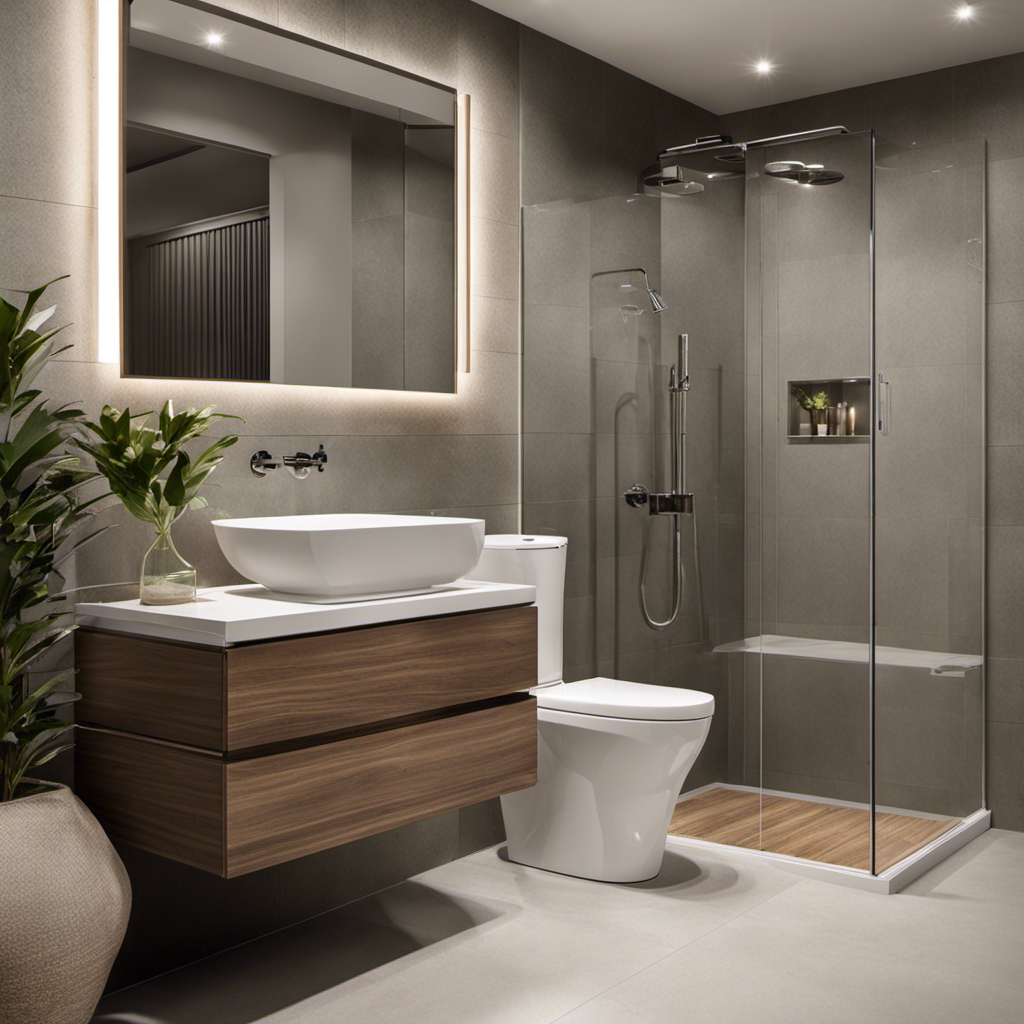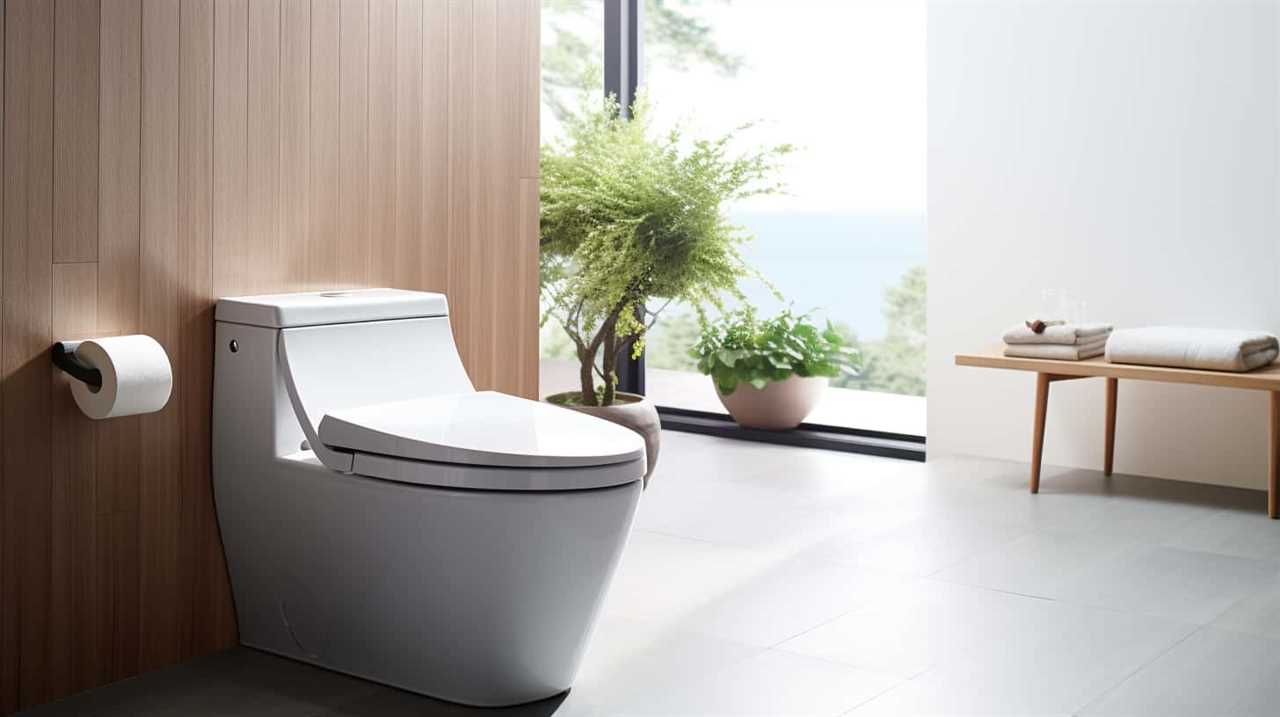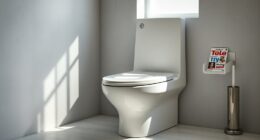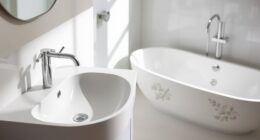I’ve been on countless outdoor adventures, and one thing I’ve learned is the importance of having reliable restroom facilities in remote areas. That’s where vault toilets come in.
These essential outdoor restrooms are designed to provide sanitary waste disposal in places like national parks, campgrounds, and hiking trails. They play a crucial role in maintaining cleanliness and preserving the environment by preventing the spread of diseases and protecting water sources.
Plus, they offer convenience, hygiene, and a way to reduce contamination risks.
Let’s dive into the world of vault toilets and explore why they are so essential in remote areas.
Key Takeaways
- Vault toilets are designed to provide sanitary waste disposal in remote areas.
- They help prevent the spread of diseases and protect water sources.
- Regular maintenance and cleaning are required to ensure proper functioning.
- Vault toilets are a practical solution for locations without plumbing or water access.
Definition and Importance of Vault Toilets
I think it’s important to understand the definition and significance of vault toilets in providing sanitary waste disposal in remote areas.
Vault toilets are outdoor restroom facilities designed to maintain cleanliness and preserve the environment. They are commonly found in national parks, campgrounds, and hiking trails.
These toilets play a crucial role in preventing the spread of diseases and protecting water sources. The history of vault toilets dates back to the early 20th century when they were first introduced as a practical solution for locations without plumbing or water access.
Their impact on public health cannot be overstated, as they provide a convenient and hygienic restroom option in remote areas, reducing the risk of contamination and promoting outdoor activities and tourism.
Components and Design of Vault Toilets
The main components of these restroom facilities include an underground holding tank, a toilet seat, and ventilation pipes.
Vault toilets have seen design innovations in recent years, incorporating materials that enhance durability and functionality. The underground holding tank, typically made of concrete or steel, is designed to securely contain the waste. This ensures that the surrounding environment remains clean and protected.
The toilet seat, made of sturdy and comfortable materials, provides a hygienic and convenient option for users. Ventilation pipes are strategically placed to control odors and release gases, ensuring a pleasant experience for everyone.
These design innovations, coupled with the use of high-quality materials, make vault toilets practical and reliable solutions for remote areas. They offer a safe and sanitary restroom option that withstands harsh weather conditions and provides essential amenities to outdoor enthusiasts.
Maintenance and Cleaning of Vault Toilets
Regular maintenance and cleaning ensure that vault toilets function properly and remain sanitary for users. As someone responsible for maintaining these outdoor restrooms, I understand the importance of implementing effective cleaning techniques.
First, I start by emptying the vaults using waste removal trucks on a scheduled basis. Then, I thoroughly sanitize the interior surfaces of the toilet and vault, making sure to remove any odors or stains. I restock toilet paper and hand sanitizer during this process to ensure that users have everything they need.
Regular inspections are also conducted to identify any repairs or maintenance needs. By following these maintenance and cleaning practices, vault toilets can continue to provide a convenient and hygienic restroom option in remote areas, promoting cleanliness and preserving the environment.
Benefits of Using Vault Toilets in Remote Areas
Using vault toilets provides a convenient and hygienic restroom option in locations without plumbing or water access.
One of the advantages of using vault toilets in remote areas is the positive impact it has on the environment. By containing waste in the vault, vault toilets help preserve the natural surroundings and reduce the risk of contamination in water sources and ecosystems.
Additionally, vault toilets contribute to the overall cleanliness and aesthetics of outdoor areas, making them more enjoyable for visitors.
The availability of vault toilets also encourages outdoor activities and tourism, as people feel more comfortable knowing there are restroom facilities nearby.
When conducting an impact assessment, it becomes clear that using vault toilets not only meets the basic needs of individuals but also ensures the long-term sustainability of these remote areas.
Proper Etiquette for Using Vault Toilets
When using vault toilets, it is important to follow posted guidelines and instructions to ensure proper etiquette. Here are three key points to keep in mind:
-
Dispose of waste properly: It is crucial to only dispose of human waste and toilet paper in the vault. Avoid throwing any non-biodegradable items that could harm the environment.
-
Maintain cleanliness: After using the toilet, make sure to flush it to keep it clean for the next user. Additionally, respect other users by keeping the toilet area tidy and refraining from vandalizing the facility.
-
Practice good hygiene: While vault toilets may not have running water, it is still essential to maintain hygiene. Carry hand sanitizer and use it before and after using the toilet to minimize the spread of germs.
Locations and Availability of Vault Toilets
I frequently come across vault toilets in campgrounds, parks, and other locations where plumbing and water access are not available. These outdoor restroom facilities are essential for maintaining cleanliness and preserving the environment. However, there are challenges when it comes to the availability of vault toilets in remote areas. To address these challenges, accessibility solutions have been implemented. Here is a table summarizing the locations and availability of vault toilets:
| Location | Availability | Challenges | Solutions |
|---|---|---|---|
| Campgrounds | Common | Limited space | Install multiple vault toilets |
| Parks | Common | High visitor traffic | Increase the number of toilets |
| Hiking trails | Limited | Remote locations | Place vault toilets at trailheads |
| Remote areas | Limited | Lack of infrastructure | Use portable vault toilets |
| National parks | Common | Preservation regulations | Incorporate eco-friendly designs |
These solutions aim to make vault toilets more accessible in remote areas, ensuring that individuals have a convenient and hygienic restroom option while exploring the great outdoors.
Practicality of Vault Toilets in Remote Areas
In remote areas where plumbing and water access are unavailable, vault toilets prove to be a practical solution for providing restroom facilities. As mentioned earlier, vault toilets are easy to maintain and environmentally friendly. Now, let’s delve into the practicality of vault toilets in these remote areas.
-
Cost Effectiveness: Vault toilets are a cost-effective option for remote locations that lack traditional restroom infrastructure. Since they do not require plumbing or water access, the installation and maintenance costs are significantly lower compared to building and maintaining traditional restrooms.
-
User Satisfaction: Users in remote areas greatly appreciate the convenience and hygiene that vault toilets offer. These facilities provide a clean and sanitary restroom option, ensuring user satisfaction and enhancing their overall outdoor experience.
-
Accessibility and Availability: Vault toilets are strategically placed in remote areas where traditional restrooms are not feasible. Their durable construction allows them to withstand harsh weather conditions, ensuring their availability year-round.
Vault toilets are not only practical but also cost-effective and contribute to user satisfaction in remote areas.
Environmental Impact of Vault Toilets
The environmental impact of vault toilets is a significant consideration for preserving natural areas and protecting ecosystems. Vault toilets play a crucial role in waste management, ensuring that human waste is properly contained and disposed of in remote areas. By using a concrete or steel vault as a holding tank, vault toilets prevent contamination of soil and water sources.
This waste management system helps to maintain the cleanliness and integrity of ecosystems, reducing the risk of spreading diseases and pollutants. Regular maintenance and cleaning of vault toilets are essential to ensure their proper functioning and minimize any negative environmental impact.
Future Improvements and Innovations in Vault Toilet Technology
In my previous discussion about the environmental impact of vault toilets, I highlighted the importance of these facilities in preserving the environment and preventing the spread of diseases.
Now, let’s explore the future improvements and innovations in vault toilet technology.
-
Innovative technologies: As technology continues to advance, we can expect to see new features incorporated into vault toilets. This could include automated waste disposal systems, sensor-activated flushing mechanisms, and advanced odor control methods.
-
Future upgrades: The design and construction of vault toilets are also likely to undergo improvements. This could involve using more durable and eco-friendly materials, enhancing the ventilation system for better odor control, and implementing more efficient waste management systems.
-
Sustainable solutions: With a growing focus on sustainability, future vault toilets may incorporate renewable energy sources such as solar power for lighting and ventilation. Additionally, water-saving technologies like waterless urinals or low-flow toilets may be integrated to further reduce the environmental impact.
These innovations and upgrades in vault toilet technology will not only enhance user experience but also contribute to the overall sustainability and efficiency of these essential outdoor restrooms.
Frequently Asked Questions
Are Vault Toilets Only Used in Outdoor Areas or Are They Also Found in Indoor Facilities?
Vault toilets are primarily used in outdoor areas like campgrounds and parks. They are not typically found in indoor facilities. Their advantages include convenience and hygiene, while their sustainability lies in waste containment and environmental preservation.
How Often Should Ventilation Pipes in Vault Toilets Be Cleaned or Inspected?
I’m not sure about the exact frequency, but regular cleaning and inspection of ventilation pipes in vault toilets is important. Maintaining proper ventilation helps control odors and ensures a sanitary environment for users.
Can Vault Toilets Accommodate Individuals With Disabilities or Are They Only Suitable for Able-Bodied Individuals?
Vault toilets can accommodate individuals with disabilities, providing accessible restroom facilities in remote areas. They are designed to meet ADA guidelines, with features like wider doors, grab bars, and appropriate spacing for wheelchair maneuverability.
Is There a Specific Type of Waste Removal Truck Used for Emptying Vault Toilets?
Yes, waste removal trucks are specifically designed for emptying vault toilets. The frequency of maintenance depends on usage, but regular emptying and cleaning ensure proper functioning and hygiene of the facilities.
Are There Any Regulations or Guidelines for the Construction and Installation of Vault Toilets in Remote Areas?
There are regulations and guidelines for constructing and installing vault toilets in remote areas. Regular maintenance of ventilation pipes in vault toilets is essential for controlling odors and releasing gases properly.
Conclusion
In conclusion, vault toilets are like hidden gems in remote areas, providing essential restroom facilities for outdoor enthusiasts.
With their sturdy design and regular maintenance, these toilets ensure cleanliness and hygiene while preserving the natural environment. They offer convenience, reduce contamination risks, and conserve water resources.
By following proper etiquette and disposing of waste responsibly, users can contribute to the longevity and effectiveness of vault toilets.
As technology advances, we can expect future improvements and innovations in vault toilet technology to further enhance the user experience in these remote locations.










